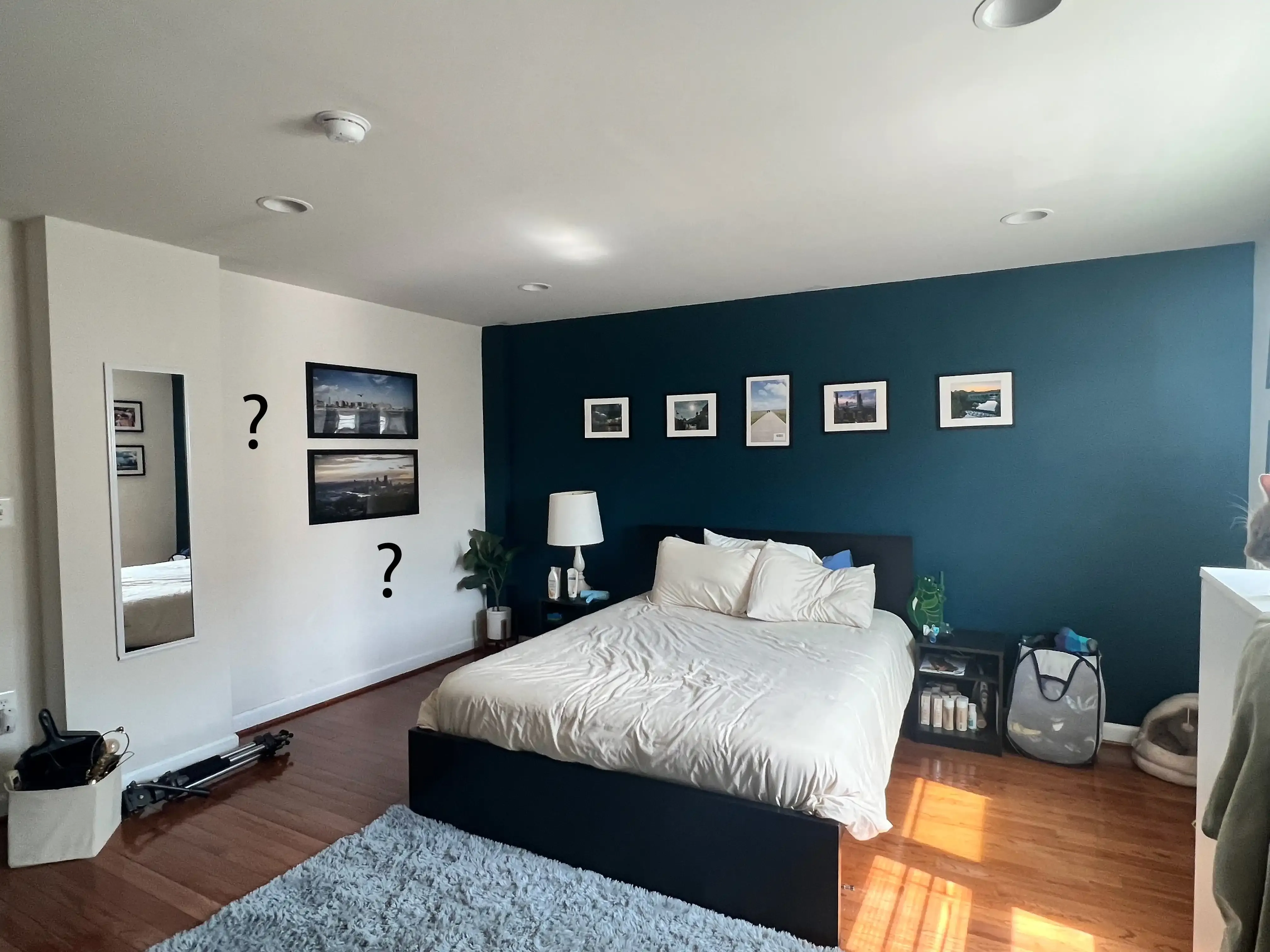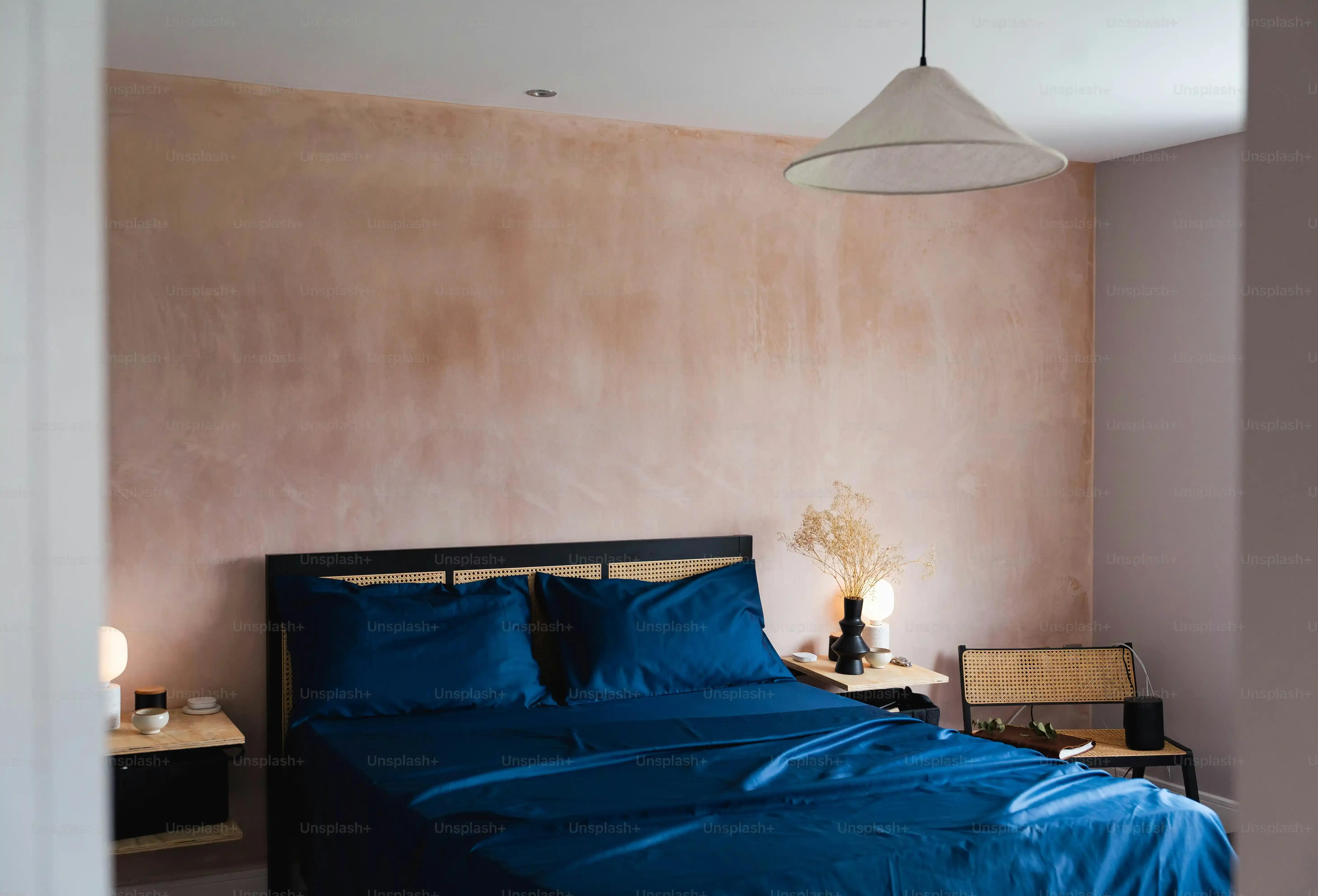Table of Contents
let's talk about bedroom walls. You've seen the design magazines, scrolled through the perfect Pinterest feeds, and somewhere along the way, you probably heard the cardinal rule: one accent wall, maybe two if you're feeling rebellious, but usually just one. It’s meant to be a focal point, a single pop of color or texture to add drama without overwhelming the space. But what if your bedroom feels a bit… flat with just one? What if you have two walls that just seem to demand attention? This brings us to the question: can you have 2 accent walls in a bedroom?
Can You Really Have 2 Accent Walls in a Bedroom?

Can You Really Have 2 Accent Walls in a Bedroom?
Challenging the Single-Wall Dogma
Let's cut to the chase: Can you really have 2 accent walls in a bedroom? Absolutely. The idea that you're strictly limited to one splash of bold color or striking texture is, frankly, a bit outdated. Design rules are more like guidelines, and sometimes the most interesting spaces are the ones that push those boundaries a little. Think about it – a bedroom is a personal sanctuary, not a museum exhibit bound by rigid conventions. If two walls call out for a different treatment, whether it's paint, wallpaper, or paneling, there's a way to make it work. It requires some thought, sure, but it's far from impossible.
Why Stop at One Statement?
So, why would you even consider having two accent walls in a bedroom? Maybe you have an awkward architectural feature on one wall, like a fireplace or a built-in, that deserves emphasis, and another wall, perhaps behind the bed, that you also want to highlight. Maybe you love two different colors or textures and can't bear to choose just one. Sometimes, a room's layout naturally lends itself to emphasizing two distinct areas, like a sleeping zone and a reading nook. It's not about throwing paint at every wall; it's about intentional design that enhances the room's character and function. It’s about saying, "Yep, these two walls are important," and backing it up with a deliberate choice.
What's the biggest reason people hesitate to try two accent walls?
- Fear of overwhelming the space.
- Worry it will look messy or disjointed.
- Uncertainty about color or pattern combinations.
- Belief that it's a design faux pas.
Assessing Your Room's Potential
Before you grab paint swatches for a second wall, take a good look at your bedroom. Not every space can handle the visual weight of two accent walls. Size matters here; a tiny box room might feel suffocated by too much bold treatment. Natural light is crucial too. Does the room get plenty of sun, or is it perpetually dim? Darker, bolder accent walls soak up light. Consider the shape of the room and where the furniture will sit. Are the two walls you're considering adjacent, opposite, or on different planes? The relationship between the walls you choose dramatically impacts the final look and whether having two accent walls in a bedroom feels like a design triumph or a chaotic mess.
When Two Accent Walls Work in a Bedroom Space
Defining Zones and Features
Alright, so you're thinking about pushing past the one-wall limit. When does having two accent walls in a bedroom actually make sense? It works best when those walls serve a purpose beyond just being colorful. Maybe you have a killer architectural feature on one wall, like a bank of windows with a built-in seat, a fireplace, or some cool molding. Highlighting that with an accent color or texture draws the eye and celebrates the unique bones of the room. On another wall, perhaps the one behind your bed, you want to create a cozy, grounded feeling. Using a second accent treatment there visually separates the sleeping area from the rest of the room. It's about creating distinct zones or emphasizing existing features, not just randomly picking two walls.
Harmonizing Color, Texture, and Pattern
The key to pulling off two accent walls without your bedroom looking like a paint sample factory is harmony. You aren't just slapping two bold statements next to each other and hoping for the best. Consider the relationship between the two walls. Are they opposite? Adjacent? Think about how the colors or textures will interact. If you go bold on one wall, maybe the second accent wall uses a more subdued tone from the same color family, or a subtle texture that complements the first. Using different materials, like paint on one wall and wallpaper or wood paneling on another, can add depth without being overwhelming. It’s a balancing act; you want visual interest, not a visual shouting match. When you can make two accent walls in a bedroom talk to each other nicely, you're on the right track.
Here are a few scenarios where two accent walls can shine:
- Highlighting the wall behind the bed and a wall with a significant architectural feature (like a fireplace or large window).
- Defining separate functional areas, such as a sleeping zone and a small workspace or reading nook.
- Using complementary colors or textures on opposite walls to create depth and balance in a long, narrow room.
- Implementing a bold pattern on one wall and picking up a subtle color from that pattern for the second accent wall.
Avoiding Common Mistakes with Two Accent Walls in a Bedroom

Avoiding Common Mistakes with Two Accent Walls in a Bedroom
Don't Let Your Walls Fight Each Other
Alright, you're sold on the idea of having two accent walls in a bedroom. Great. Now, let's talk about how to not mess it up spectacularly. The biggest pitfall? Making your walls compete for attention like toddlers over a single toy. This usually happens when you pick two colors that clash rather than complement, or two patterns that are just too busy and loud together. Imagine a hot pink wall battling a lime green one, or a frantic floral wallpaper next to a dizzying geometric print. It’s visually exhausting. Your bedroom should be a place of rest, not a sensory overload. Choose colors and patterns that have a conversation, not an argument. Think about the mood you want to create – calming, dramatic, cozy – and select your wall treatments accordingly. If one wall is a bold statement, the second should ideally support it without trying to steal the show.
Ignoring Room Scale and Lighting is a Recipe for Disaster
Another classic blunder when attempting two accent walls in a bedroom is completely ignoring the practical realities of your space. Painting two dark, dramatic walls in a tiny bedroom with one small window is going to make the room feel like a cave. Scale is crucial. What works in a spacious loft will likely overwhelm a standard-sized bedroom. Pay attention to how light hits the walls at different times of the day. A color that looks moody and sophisticated in bright sunlight might turn gloomy and depressing in shadow. Also, resist the urge to make *every* wall an accent wall. That’s not having accent walls; that’s just having a room with four different wall treatments, which rarely works outside of a very specific, avant-garde design context. The non-accent walls provide necessary visual breathing room.
Mistake | Why It's Bad | How to Avoid It |
|---|---|---|
Clashing Colors/Patterns | Creates visual chaos and tension. | Use a color wheel, stick to complementary or analogous schemes, ensure patterns have different scales. |
Ignoring Room Size | Makes small rooms feel smaller, large rooms feel disconnected. | Consider room dimensions; use lighter or more subtle accents in smaller spaces. |
Poor Lighting Consideration | Colors can look drastically different, making the space feel dark or jarring. | Test paint swatches on walls and observe them at different times of day. |
Making Too Many Walls Accents | Eliminates the concept of an "accent"; room lacks visual rest points. | Limit yourself to two walls that truly deserve the emphasis. |
Styling Your Bedroom with Two Statement Walls

Styling Your Bedroom with Two Statement Walls
Making Your Statement Walls Play Nice with Everything Else
so you've committed to having two accent walls in your bedroom. The colors are chosen, maybe one's painted and the other is textured wallpaper. Now comes the part where you make the rest of the room work with them. This isn't the time to cram every piece of mismatched furniture and bright accessory you own into the space. Think of the accent walls as the stars of the show, and everything else as the supporting cast. Keep the bedding relatively neutral or in colors that pull from the accent walls. Large furniture pieces, like your bed frame and dresser, should anchor the space without fighting the walls. Art and decor should complement, not compete. If your walls are loud, your accessories should whisper. If one wall is patterned, maybe the other is a solid color, and your decor on that wall is more minimalist. It's about balance; ensure the room still feels cohesive and calm, not like a funhouse exploded.
Consider these elements to harmonize your space:
- Bedding: Choose solid colors or subtle patterns that echo tones in your accent walls.
- Furniture: Use pieces with clean lines and finishes that don't clash with the wall treatments.
- Art & Decor: Select pieces that complement the wall colors or textures; don't hang busy art on an already busy wall.
- Lighting: Use lighting to highlight features or soften intense colors; multiple light sources create depth.
- Textiles: Layer rugs, throw pillows, and blankets in coordinating colors and textures to add warmth and visual interest elsewhere in the room.
Making Two Accent Walls Work
So, can you have 2 accent walls in a bedroom? As we've seen, it's less about following some arbitrary rulebook and more about understanding your space, your style, and how colors and textures interact. Doubling up isn't a default setting; it's a deliberate design choice. When executed with thought – considering light, room size, furniture placement, and the overall vibe you're aiming for – two accent walls can add depth, personality, and a touch of the unexpected that a single wall just can't deliver. It requires a bit more planning than slapping paint on one wall, sure, but the payoff can be a bedroom that feels truly unique and intentionally designed, not just decorated.
